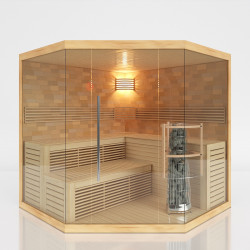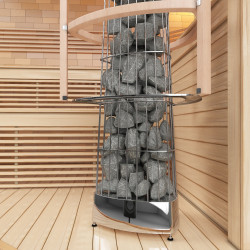13 Jan


Posted By
0 Comment(s)
6733 View(s)
The difference between a sauna made of Hemlock (Canadian hemlock) and a sauna made of Finland (Finnish pine or spruce) lies in the type of wood used, their properties, appearance, and durability. Here are the main distinctions:
1. Hemlock wood (Canadian hemlock):
- Origin: North America, particularly Canada.
- Color and texture: Light wood with an even texture and a pleasant natural shade.
- Smell: Almost odorless, making it ideal for people sensitive to scents.
- Heat resistance: Handles high temperatures and humidity well, does not crack.
- Durability: Moderate, less dense compared to hardwood species.
- Usage: Suitable for family saunas and spas requiring a soft and unobtrusive interior.
2. Finland wood (Finnish pine or spruce):
- Origin: Finland and Scandinavian countries.
- Color and texture: More pronounced texture with characteristic patterns and knots. The color ranges from light yellow to warm reddish tones.
- Smell: A light natural pine aroma, often associated with traditional saunas.
- Heat resistance: Excellent, withstands high temperatures and humidity perfectly.
- Durability: Denser and more durable than Hemlock.
- Usage: Popular in traditional Finnish saunas for its natural appeal and strength.
Comparison by key criteria:
| Criteria | Hemlock | Finland (pine/spruce) |
|---|---|---|
| Origin | Canada, North America | Finland, Scandinavia |
| Color | Light, even texture | Warm shade with knots |
| Smell | Almost absent | Light pine aroma |
| Heat resistance | Good | Excellent |
| Durability | Moderate | High |
| Cost | Usually cheaper | Can be more expensive |
| Popularity | Modern spas and saunas | Traditional Finnish saunas |
How to choose?
- Hemlock: Choose if you want a modern, light sauna without a strong smell, suitable for scent-sensitive individuals.
- Finland: Choose if you prefer a traditional sauna with a natural pine aroma and a classic Finnish atmosphere.
The final choice depends on your preferences for style, budget, and functionality!









Leave a Comment